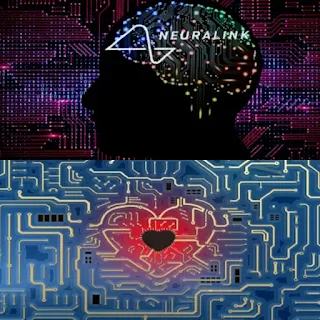[ad_1]
The first human chip implant, produced by Elon Musk’s Neuralink company, has been performed in a human, despite a controversial history in animal testing.
After gaining approval for human trials, the company has now implanted the first Neuralink chip, called ‘Telepathy’, inside a person’s brain.
Musk claims that Telepathy allows control of a phone or computer, and therefore almost any other device, “with just a thought.”
The billionaire businessman hopes it will allow users with disabilities to “communicate faster.”
What is Neuralink?
Neuralink was registered in California as a “medical research” company in July 2016, and Musk has mostly funded the company himself. It is famous for its work on creating a network of electrodes linked to the brain, which may allow us to communicate wirelessly with the world.
The company claims that this will enable us to share our thoughts, fears, hopes and anxieties without insulting ourselves in written or spoken language. It can also help paralyzed people walk again and treat other neurological diseases.
The company achieved a major achievement by implanting Telepathy in humans.
“If Stephen Hawking were alive.” Musk announces the success of implanting the first human brain chip
The company sparked great controversy, especially because of its experiments on live animals, including monkeys and pigs.
Neuralink previously admitted that monkeys died during tests, but denied allegations of animal abuse, despite allegations suggesting otherwise.
The Neuralink system consists of a computer chip connected to small elastic threads that are sewn into the brain by a robot that resembles a sewing machine.
The robot removes a small portion of the skull, attaches thread-like electrodes to specific areas of the brain, then sutures the hole, and the only visible remains is a scar left by the incision.
Musk said that this procedure takes only 30 minutes, will not require general anesthesia, and patients will be able to go home the same day.
The brain is made up of nerve cells that transmit signals to other cells in the body, such as muscles and nerves. Electrodes on the Neuralink chip can read these signals, which are then translated into controls for external technologies, such as computers or smartphones, or bodily functions, such as muscle movement.
The question remains: Will all these promises apply to the first patient to receive the transplant? Although Musk said he is “recovering well.”
A ‘copy of a human heart on a chip’ beats like a real heart
Simulating miniature versions of human organs in the laboratory is an emerging tool in medical research, and researchers now have a new “heart-on-a-chip” model to take advantage of.
The team, from Cedars-Sinai Medical Center in Los Angeles, says it will have an important role in testing the safety of cancer treatments, which have been shown to risk heart damage while fighting cancer cells.
Noteworthy improvements over previous heart chip models include the maturity of the cells the team developed from human pluripotent stem cells (hiPSCs), and their ability to beat much like a human heart, at about 60 beats per minute.
“Multilineage hiPSC-based systems may reduce reliance on animal models traditionally used for preclinical cardiotoxicity testing of drugs,” the researchers wrote.
The hiPSCs, capable of turning into any cell type, were designed to become heart cells and blood vessel cells before being placed on a flexible silicone material called polydimethylsiloxane, or PDMS.
By simulating blood flow and mechanical movements of the heart in response to certain drug treatments, scientists can predict potential toxicological problems that could cause arrhythmia or muscle cell death.
The heart chip remained operational for several weeks, providing the opportunity for long-term investigations into how medications and other environmental factors affect the heart.
In addition to helping develop safer drugs, the heart-on-a-chip should also be able to teach scientists more about the complexities of heart disease: how it starts and develops, and how it can be treated.
The research was published in the Royal Society of Chemistry’s Lab on a Chip .
[ad_2]
Source link

